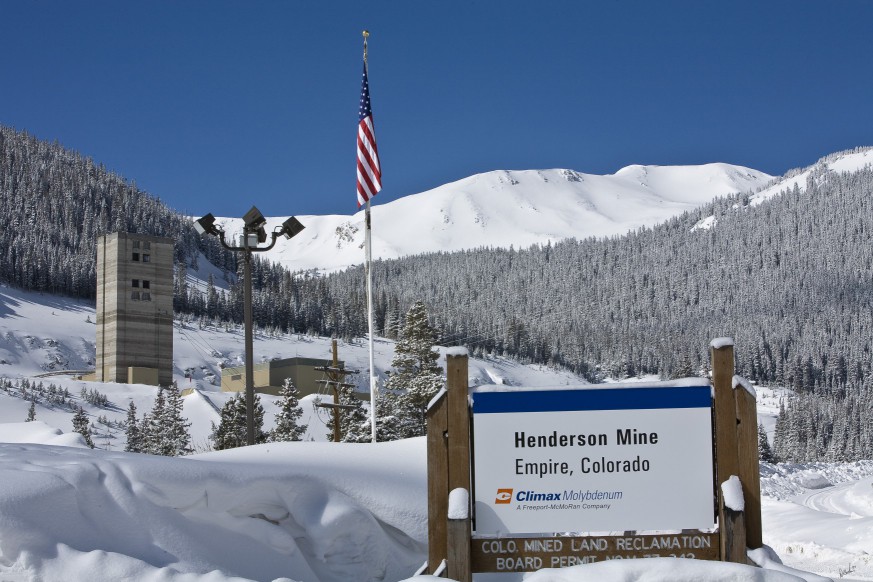By Corinne Westeman
A data center and technology campus. An engine and automotive testing facility. A state park. An aquaponics farm. A community college.
These were only some of the ideas that Colorado School of Mines students suggested Freeport-McMoRan and Climax Molybdenum Co. could do with the eastern Henderson Mine campus once it closes.
On Saturday, the company hosted a second round of its Henderson Mine Repurposing Challenge with 35 Mines students, narrowing down from nine teams to five. The final five will compete in the final round on Dec. 7 at Mines, with a first-place prize of $25,000.
Last February, the company reached out to the School of Mines because many on the Henderson Mine leadership team are alumni, and there has been a long relationship between the company and the school, Bill Cobb of Freeport-McMoRan explained.
Cobb, the company’s vice president of environmental services and sustainable development, said the students have come up with creative ideas that the leadership team wouldn’t have identified.
After Mines and Freeport-McMoRan finalized the decision in June, the school launched the challenge in August. Students from various disciplines formed their own teams, totaling 25, which were narrowed down to 11 during the first round, Professor Priscilla Nelson of the mining engineering department said.
While it’s the first time Mines has done this, Nelson said there are plans to have two more challenges to brainstorm ideas on repurposing the mine’s milling facilities west of the Continental Divide and the underground facilities.
Cobb clarified that the winning team’s idea won’t necessarily be what the mine is repurposed into, as the ideas are all based on today’s markets and technologies. So, Freeport-McMoRan likely will repeat the challenge over time to get more and updated ideas as things change.
Still, mine leadership is looking for a legacy contribution to the county as well as to the state, as the Henderson Mine has been, Cobb said.
“We want to figure out what its legacy contributions, or story, is going to be,” he said. “… We’re not going to just walk away (from Henderson Mine). We want to repurpose it.”
To that end, the company invited County Manager Keith Montag to be one of the judges. Montag commented Saturday that Clear Creek is happy to be a part of the challenge’s process and appreciates the opportunity to participate.
Students’ ideas
The nine teams of 35 students spent Saturday afternoon presenting “Shark Tank”-like presentations before a panel of judges and company leadership.
Each incorporated the number of jobs saved or created, potential costs and revenues in today’s dollars, projected customers, a schedule for implementation, and which parts of the property would be repurposed.
Many of the ideas incorporated the Henderson Mine’s location in an ecologically rich area and/or alpine conditions.
The nine teams’ ideas to repurpose the mine were:
• A pumped hydroelectric storage facility.
• A data center and technology campus.
• An ecological laboratory and hiking trails.
• The Henderson Engine and Auto Testing (H.E.A.T.) facility.
• A three-pronged approach for a state park, an alpine research institute and a heavy equipment/transport technology workshop.
• A closed-loop aquaponics farm that would raise trout and lettuce.
• An anaerobic digestion bio-gas plan and composting facility, and mushroom farm.
• A community college with an emphasis on environmental science and water treatment.
Michael O’Leary, a Dumont resident and School of Mines applied mathematics student, was a member of the Bitminers team – one of the two teams that pitched repurposing into a data center.
O’Leary and his teammate Josh Leyba, an engineering physics student, emphasized to the panel that their idea would replace lost tax revenue for the county, take advantage of Colorado’s growing tech industry and diversify the county’s economy.
O’Leary said that, as a resident, he wants to see Clear Creek grow so that it can continue to fund the infrastructure projects, such as road repairs and broadband expansion, needed to keep its residents safe and competitive in the 21st century.
This article originally appeared in the Clear Creek Courant on October 22nd.
